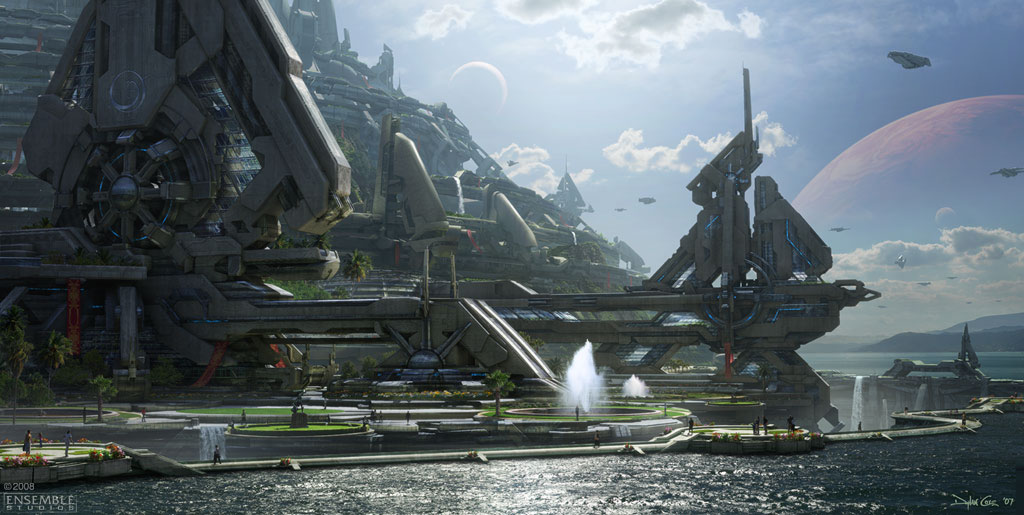As the years go by these become for more visually stunning
and become more interactive and explorative than ever before. A level designer
needs to give instruction to guarantee flowing gameplay, but not so much that
it is obvious to the play. There still needs to be a challenge and a sense of
discovery once you uncover the next task or stage of the game.
So many aspects of an environment can influence the
atmosphere. The biggest being lighting and weather. How the light plays with
object surfaces and textures can really highlight and intensify the desired
atmosphere. Dark and gloomy lighting, with stormy weather can obviously create
a very sinister feel, whereas a breaking dawn with a beautiful sunrise, casting
an autumn coloured glow, would to create a feeling of hope and adventure, a new
beginning. Scenery and surrounding also influence the aesthetics of a game environment.
Built up cities, or open fields support many different ways of gameplay. Open fields
and wide spacing, leave players to roam, giving a wide scope of exploration. A
city environment could be controlled, cities are mapped out in real life to
create flow, allowing people to reach certain destinations, this is true of
video games also. Even though a huge city would leave room for exploration, but
many games that use this type of layout are usually quite linear, you go in a
certain direction to reach a certain goal.
Depending on the game style/genre, the levels of realism and
stylisation have to be measured carefully. As well as other things, the
environment of a game plays a key role in making a player believe the world
they are in. With greater technology as the years progress, the level of
realism to the visual graphics of a game has reached high levels, with recent
releases, it becomes more and more difficult to determine what is real and what
is game graphics. Such as the very recent release Tomb Rader, I personally was
stunned by the graphics and the quality of realism that was obviously present. In
terms of whether an environment is physically possible to recreate in our world,
the level and practical realism is a rough area. For me, if It looks right and
doesn’t bend any laws of physics, then it wouldn’t drag me out of my gameplay.
But I love highly stylised visuals just as much as I love revolutionary, highly
realistic looking graphics. The environments in games such as final fantasy 10
and Halo are visually stunning and encapsulating, and have just as bigger
impact as realistic environments, but it is entirely dependent on the genre of
the game.



Personally one of the most amazingly breath-taking
environment I’ve seen of recent belong to ‘That Game Company’ title Journey. Its
style is highly simplistic but simple beautiful. The environments rage from
huge desert, to an underwater world, to a winter wonderland. They are all environments,
unlike any others. They were so well executed that you could feel the cold when
battle through the snow storm, my throat felt dry when wondering through the
dessert. Everything was so complimentary even though you went from sand to
snow, hot to cold, everything still flowed.


Environments in games give it identity and style. So much can be said through
just how a building looks, or how an environments flows from one extreme to
another. Without cleverly executed and though out environments, games would not
have that power that they have on the human mind and allowing us to explore the
form of escapism it gives us.
No comments:
Post a Comment